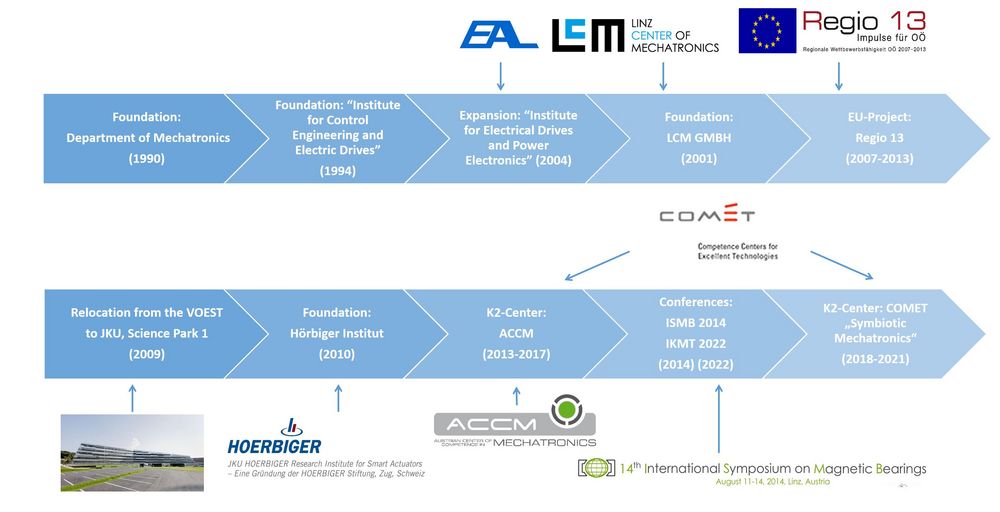Following the establishment of the research group, research conducted at the institute has resulted in a large number of technical innovations and patents. Examples include the switched reluctance machine featuring permanent magnetic excitation, radial and combi bearing equipped with permanent magnets, a bearingless motor requiring significant less winding, and a bearingless segment motor for applications in the low-cost sector.
In 2007, the EU and the state of Upper Austria launched the "Competitiveness Upper Austria" program. The Institute for Electrical Drives and Power Electronics was part of this project and involved in a number of research projects focusing on growing competitiveness and growth and employment in Upper Austria.
Th institute's sister department, the "JKU HOERBIGER Research Institute for Smart Actuators", was established in 2010 with the generous financial support of the HOERBIGER Foundation. The institute focuses on the science of efficient and dynamic actuators, supporting a balance between base-knowledge and application-oriented research and forming an important pillar to establish, maintain and advance technological excellence in industry.
Today, the Institute for Electrical Drives and Power Electronics has partnered with a large number of competent, well-known companies in Austria and abroad, forming close scientific and industrial collaboration efforts with LCM GMBH.
As part of the state-funded K2 Centre ACCM, the institute focuses primarily on research between 2013 and 2017. In 2014, the institute hosted the ISMB conference on magnetic bearing technology and magnetic bearing systems.
The institute's most recent milestone was establishing the K2 center "Symbiotic Mechatroics" together with LCM GMBH. As part of funding this center, the institute conducts research in 4 "Areas", whereby the institute is mainly involved in the "Area Act".
